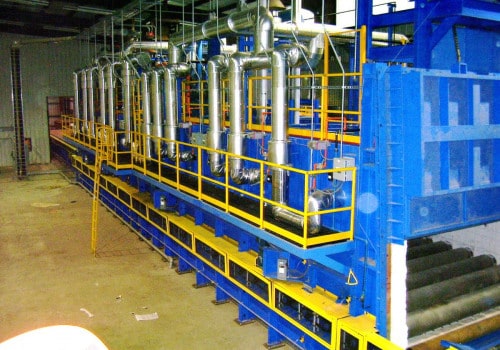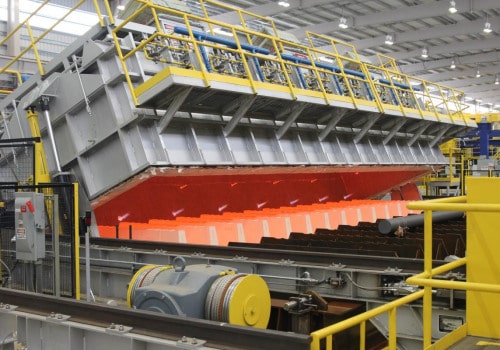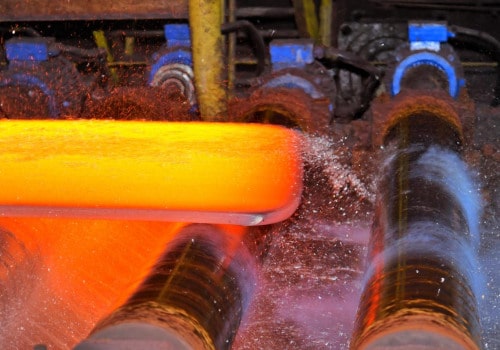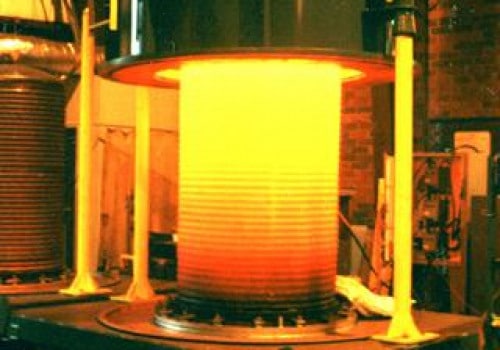Steel
Steel Furnaces
The heat treatment of alloyed, carbon or single grain steels is a world of development that CEC has pursued for over 50 years.
Rugged and higher temperature construction is the hallmark of these equipment designs. The furnaces can be charged with overhead cranes, manipulators on rails, gantry cranes and roller conveyors.
CEC can build a charging system that interfaces with your production equipment.
Please call us and see how one of our senior applications engineers can guide you through a design and installation process to meet your critical steel manufacturing needs.
Steel Heat Treatment
CEC offers a wide variety of treatment options for both alloy steel & carbon steel. We specialize in large custom jobs and we have extensive experience designing furnaces and quenching systems to meet exacting steel property specifications.
In general, steel treatments can be understood by dividing them into four categories. See the sections below to learn more.
Steel Annealing
Annealing & Stress Relieving Treatments can be performed at either subcritical or critical temperature levels; above or below 1,340 °F (730 °C) for standard carbon steel. All steel anneal treatments require that the product be allowed to cool slowly, in the furnace itself, so that a properly softened metal structure can be realized. Stress relieving is preformed to relieve the internal stresses contained in a part, after hot work, cold work, or quenching has been completed. Relief is preformed to prevent distortion or cracking that might occur when a part is either further machined or used in real-world work. CEC has designed a large variety of annealing & relief furnaces with multiple chambers to maximize furnace efficiency for this treatment. The critical, or austenite temperatures for steel vary according to the amount of carbon or other alloying elements that they contain. If your goal is to soften steel significantly for further working or machining, annealing above critical temperature is typical. These processes, called Spheroidizing, Full Annealing, & Isothermal Annealing, require very high temperature furnaces with rugged build quality. If your process requires subcritical annealing or typical stress relief, the temperature needed will be lower. These treatments are often called process annealing if their purpose is to increase the steel’s ductility so that further work to be performed like forming or drawing.


Reheating & Preheating Treatments
Reheating & Preheating Treatments
Reheating & Preheating Treatments are typically used for billets, blooms, and extrusions that will be further hot rolled, forged, or otherwise formed while they are in a heated state. Reheating and preheating processes soften steel into a plastic state to make this further work possible. Reheating & preheating furnaces are generally continuous because they must provide the remainder of a forming process with workable material. Accuracy of temperature & dwell time is vital for these furnaces, because the remainder of a hot steel forming process uses tools and methods that depend on receiving steel in a consistently plastic state. Steel that is too malleable or not malleable enough will cause all of the processes that follow the treatment to fail specification. These large treatment systems demand rugged & expert design. We at CEC pride ourselves on being able to deliver systems in this area that will run for decades with minimal downtime.
Steel Normalizing
Steel Normalizing involves similar soak times and temperatures to some annealing processes, but cooling of the product is allowed to occur more rapidly; outside the furnace by air. Treatment temperatures are met above the alloy’s upper critical temperature so that the microstructure is refined. These treatments result in finer grain structure with improvements in uniformity and, especially in alloy steels, are combined with a subsequent temper process (see below).


Steel Hardening & Tempering
Steel Hardening & Tempering treatments constitute the last, and most extreme, of the four common treatments. Hardening starts with a product soak at high temperature (above transformation/critical temperature) and ends with very accelerated cooling, directly after heat treatment. CEC has designed and manufactured many systems for this treatment as well. We offer substantial expertise in integrating custom quenching solutions into furnace builds so that your company can meet all of the soak and time-to-quench specifications that your process demands. Often, after a hardening treatment is preformed, one of the above annealing or tempering processes will be used to relieve the high stress caused by a quench hardening. In this area as well, we offer an advantage to our customers in being able to supply both high temperature integrated quench solutions, as well as systems for subsequent lower temperature treatments.
Tempering, or “Quench and Tempering” treatments are performed at sub-critical temperatures after a hardening treatment, or normalizing treatment (above) have been performed. Normalizing & tempering treatments are typically reserved for alloy steels, while quench and temper processes are common treatments for both carbon and alloy steel types. Low temperature tempers, often used in tools or mining applications, maximize toughness while minimally affecting the hardness obtained from a previous treatment. Higher temperature tempers will result in more ductility while sacrificing some previously attained hardness. In general however, all tempering processes result in improved ductility & toughness because the product is allowed to air cool naturally after treatment.

